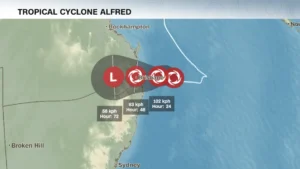Natural gas is a valuable energy source that powers homes, industries, and various applications worldwide. However, to utilize this versatile energy source safely and effectively, it is essential to control its pressure as it flows from high-pressure pipelines to lower-pressure distribution networks and individual consumers. Natural gas pressure regulators play a crucial role in maintaining the gas pressure within safe and manageable limits. In this article, we will delve into the world of natural gas pressure regulators, exploring their significance, operation, types, and applications.
The Significance of Natural Gas Pressure Regulators
Natural gas is transported over long distances through pipelines at high pressures, which can exceed hundreds of psi (pounds per square inch). However, most applications, including residential, commercial, and industrial, require natural gas to be delivered at lower, consistent pressures that are safe for use in appliances, equipment, and heating systems. The primary purpose of natural gas pressure regulators is to reduce the high-pressure gas from the supply pipeline to the required lower pressure, ensuring safe and efficient utilization. The significance of natural gas pressure regulators can be summarized as follows:
- Safety: Regulating gas pressure is essential to prevent over-pressurization, which can lead to equipment damage, gas leaks, and safety hazards.
- Appliance Compatibility: Gas appliances, such as stoves, water heaters, and furnaces, are designed to operate within specific pressure ranges. Pressure regulators ensure that the gas supplied to these appliances falls within the recommended range.
- Energy Efficiency: Maintaining consistent gas pressure optimizes the combustion process in appliances, resulting in improved energy efficiency and reduced operating costs.
- Environmental Impact: Accurate pressure regulation contributes to reduced greenhouse gas emissions by enhancing the efficiency of combustion processes.
- Equipment Protection: Pressure regulators help protect downstream equipment and appliances by preventing high-pressure gas from damaging sensitive components.
How Natural Gas Pressure Regulators Work
Natural gas pressure regulators operate on a straightforward but effective principle. Their primary components include an inlet connection, a diaphragm, a valve seat, and an outlet connection. Here’s how they work:
- Inlet Connection: The regulator is connected to the high-pressure natural gas source through the inlet connection, allowing the gas to enter the system.
- Diaphragm: A flexible diaphragm inside the regulator separates the high-pressure side from the low-pressure side. When the high-pressure gas enters the system, it exerts pressure on the diaphragm.
- Valve Seat: The valve seat, attached to the diaphragm, controls the flow of gas. It moves in response to changes in pressure.
- Outlet Connection: The regulated gas, now at a lower pressure, is delivered to the desired application or downstream system through the outlet connection.
The diaphragm is a crucial element in the system. As the pressure on the diaphragm increases, it pushes against the valve seat, compressing a spring. When the spring is compressed to a certain extent, it forces the valve seat to close, reducing the gas flow. Conversely, when the downstream pressure drops or increases, the diaphragm responds by adjusting the valve seat’s position, allowing more or less gas to flow through the regulator. This feedback mechanism ensures that the output pressure remains relatively constant, even if the inlet pressure varies.
Types of Natural Gas Pressure Regulators
There are various types of natural gas pressure regulators designed to meet the specific requirements of different applications. Some common types include:
- Direct-Operated Regulators: These regulators are self-contained and do not require an external power source. They are suitable for smaller residential and commercial applications.
- Pilot-Operated Regulators: Pilot-operated regulators use a separate pilot gas system to control the main gas flow. They are often used in larger industrial applications where precise pressure control is necessary.
- Spring-Loaded Regulators: These regulators use a spring to control the opening and closing of the valve seat. They are commonly used in residential and small commercial applications.
- Dome-Loaded Regulators: Dome-loaded regulators use a dome filled with a reference gas (usually natural gas) to maintain pressure control. They are used in applications where exceptional precision is required.
- Differential-Pressure Regulators: These regulators control the pressure difference between two gas sources, making them suitable for applications where the source pressure varies significantly.
Applications of Natural Gas Pressure Regulators
Natural gas pressure regulators have a wide range of applications in various industries and settings:
- Residential Use: In homes, natural gas pressure regulators ensure that gas appliances operate safely and efficiently. They control the pressure of natural gas from the supply line to levels suitable for stoves, water heaters, and furnaces.
- Commercial Buildings: Natural gas pressure regulators are used in commercial buildings for heating, cooking, and powering equipment. They help ensure energy efficiency and safety.
- Industrial Processes: Industries utilize natural gas for various processes, including manufacturing, heating, and power generation. Pressure regulators are vital to control gas pressure in these applications.
- Gas Distribution: In the natural gas distribution system, pressure regulators are used to maintain safe and consistent pressure levels as gas is delivered from high-pressure pipelines to consumers.
- Power Generation: Natural gas power plants use pressure regulators to control gas flow, ensuring that gas turbines and engines operate efficiently and reliably.
- HVAC Systems: Heating, ventilation, and air conditioning systems often rely on natural gas for heating. Pressure regulators help maintain the proper gas pressure for efficient operation.
- Oil and Gas Industry: Pressure regulators are used at various points in the oil and gas production and distribution process to control gas pressure, ensuring safe and efficient operations.
- Manufacturing: Industries such as chemical processing, metal fabrication, and food production use natural gas in their manufacturing processes. Pressure regulators play a vital role in these applications.
- Research and Testing: Laboratories and research facilities require precise control of gas pressure for experiments and testing. Pressure regulators provide the necessary control.
Conclusion
Natural gas pressure regulators are fundamental components in the safe and efficient utilization of natural gas in residential, commercial, and industrial settings. Their operation and control mechanisms ensure that gas pressure remains within safe and manageable limits, preventing safety hazards and optimizing energy use. With a variety of types available to meet specific application requirements, pressure regulators continue to play a pivotal role in the delivery of this versatile energy source to homes, businesses, and industries around the world.







